BOWMAN B Series XRF Spectrometer
Capable of performing compositional analysis and conducting thickness measurements. A movable X-Y stage and variable Z-axis source allows great flexibility with sample size: from a single surface mount chip to a hand-held portable electronic device.
Material analysis mode of the XRF provides analytical range from Aluminum (Z=13) to Uranium (Z=92) where detection from 0.1% to 100% is achieved accurately. The system offers four collimators with programmable, motorized controls. The minimum collimator size of 100µm allows XRF analysis of small regions of interest.
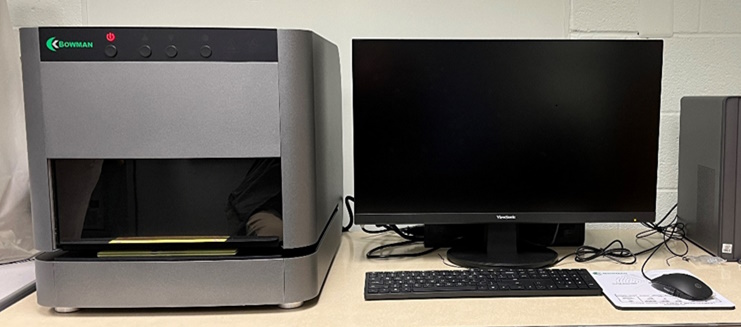
Agilent N1265A Ultra High Current Expander Unit (UHCU) and Agilent B1505A Power Device Analyzer / Curve Tracer
Capable of performing power device characterizations up to 1500 A and 10 kV. The Power Device Analyzer can measure currents at a sub-picoamp level at high voltage biases.
It can also perform fully automated capacitance measurements such as Ciss, Coss and Crss at high voltage biases (up to 3000 V), gate charge, another important parameter for high frequency switching converter era, can be evaluated easily. Automatic thermal characterization from -50 ℃ to +250 ℃ is also supported.
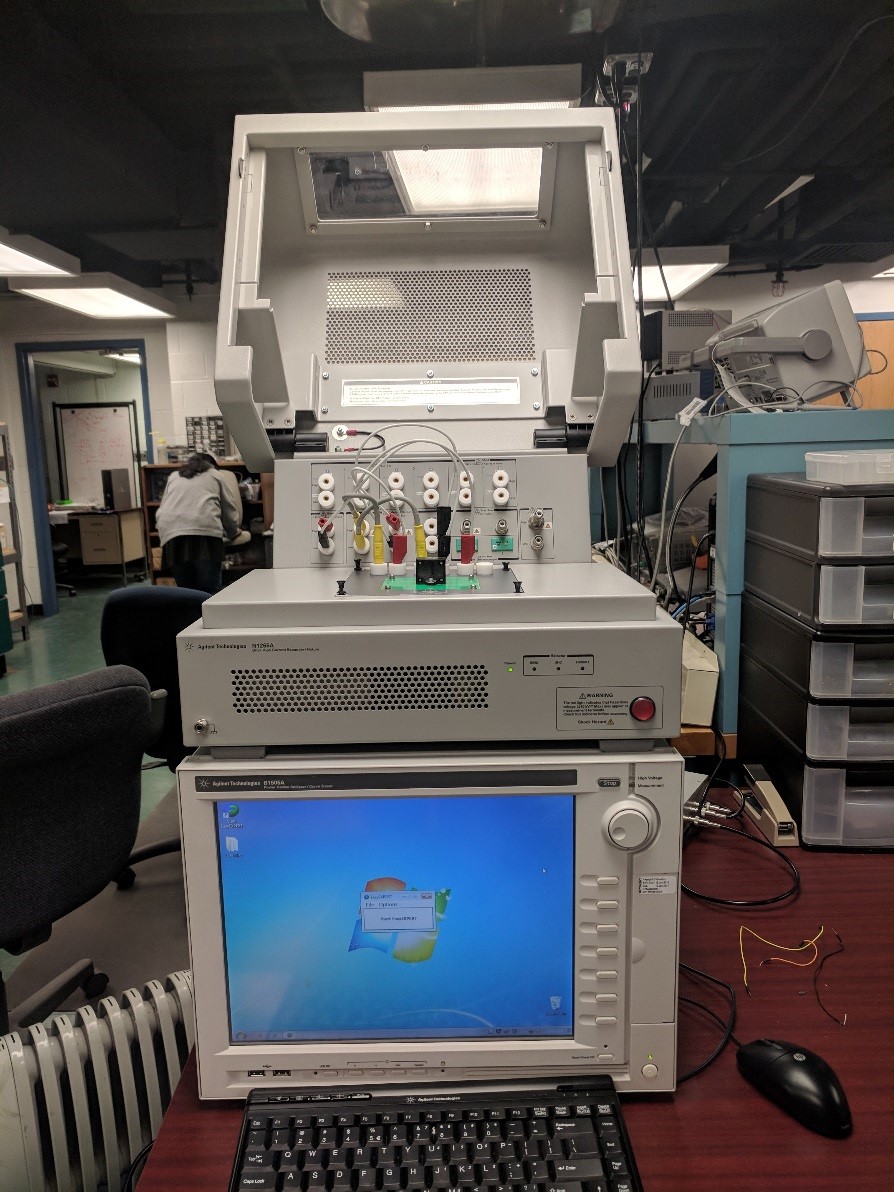
ESPEC PRA-3AP Temperature and Humidity Chamber
Capable of generating environments between a temperature range of -20 to 150 ° C and a humidity range of 0 to 98% RH @ 0 ° C < Temp < 98 ° C. Interior dimensions are 23" x 31" x 33".
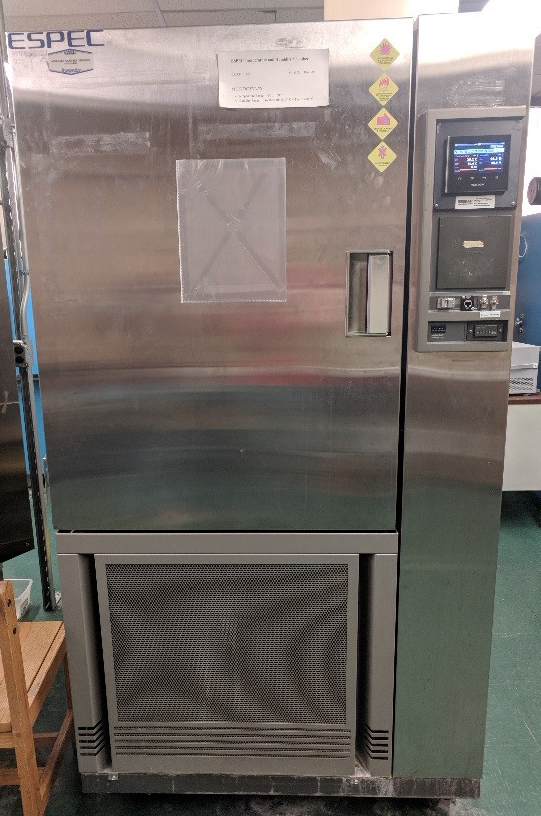
ESPEC TPC-412M Highly Accelerated Stress Testing (HAST) Chambers
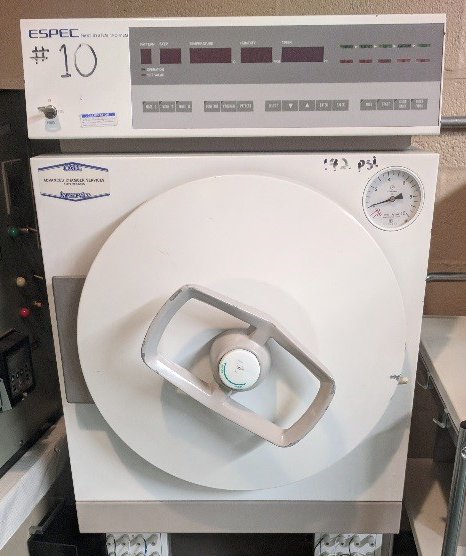
Combined Temperature-Vibration Chamber
Capable of generating environments between a temperature range of -184°C to 315°C (using LN2) and -73°C to 315°C (using LCO2) and combining uniaxial vibration. Interior dimensions are 20" x 12" x 16".
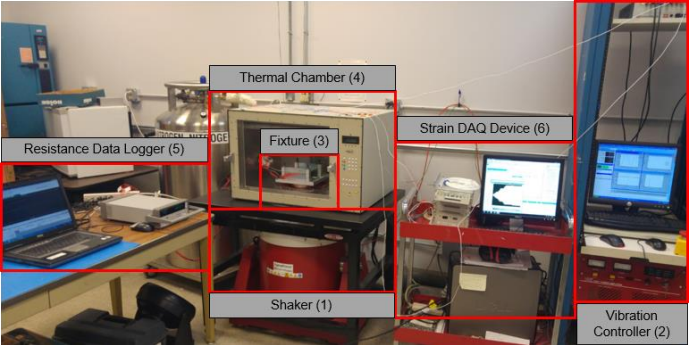
QUALMARK Typhoon 1.5 High-Rate Temperature Vibration Chamber
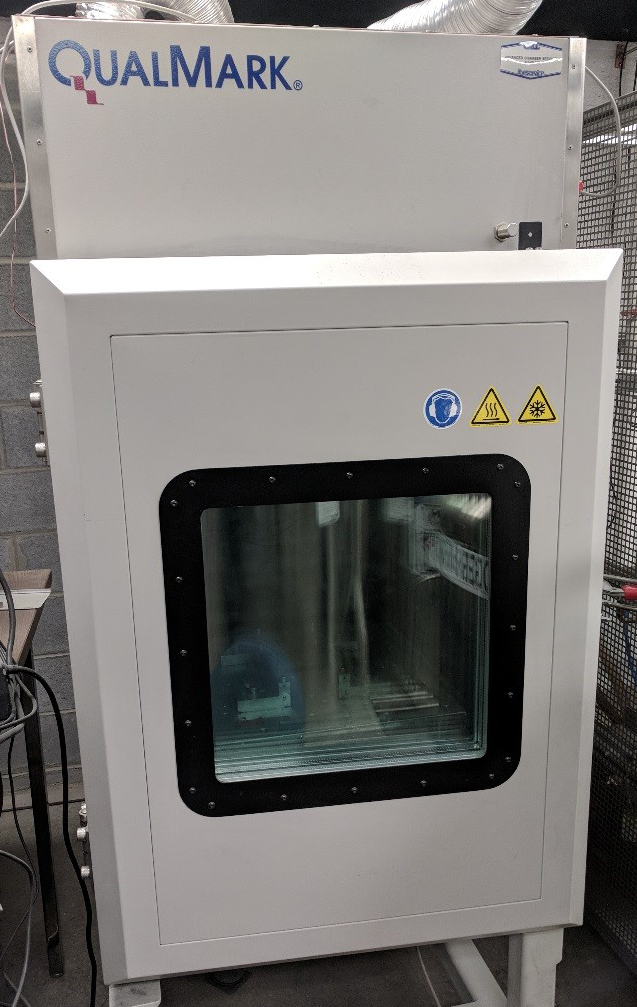
FEI Quanta Environmental Scanning Electron Microscope
CALCE houses a state-of-the-art FEI Quanta Environmental Scanning Electron Microscope (ESEM) with advanced Energy Dispersive Spectroscopy (EDS), Digital Imaging, and in-situ Heating/Cooling capabilities. The ESEM can be operated in a high vacuum-high accelerating voltage mode (standard SEM mode) very high magnification (>100KX) and high resolution or low vacuum high accelerating voltage mode.
These three modes (high-vacuum, low-vacuum and ESEM) accommodate the widest range of samples and allow CALCE researchers to examine unprepared, uncoated specimens in their natural environment. CALCE also possesses the added capability to conduct dynamic characterization like wetting, drying, absorption, melting, corrosion, and crystallization using the ESEM.
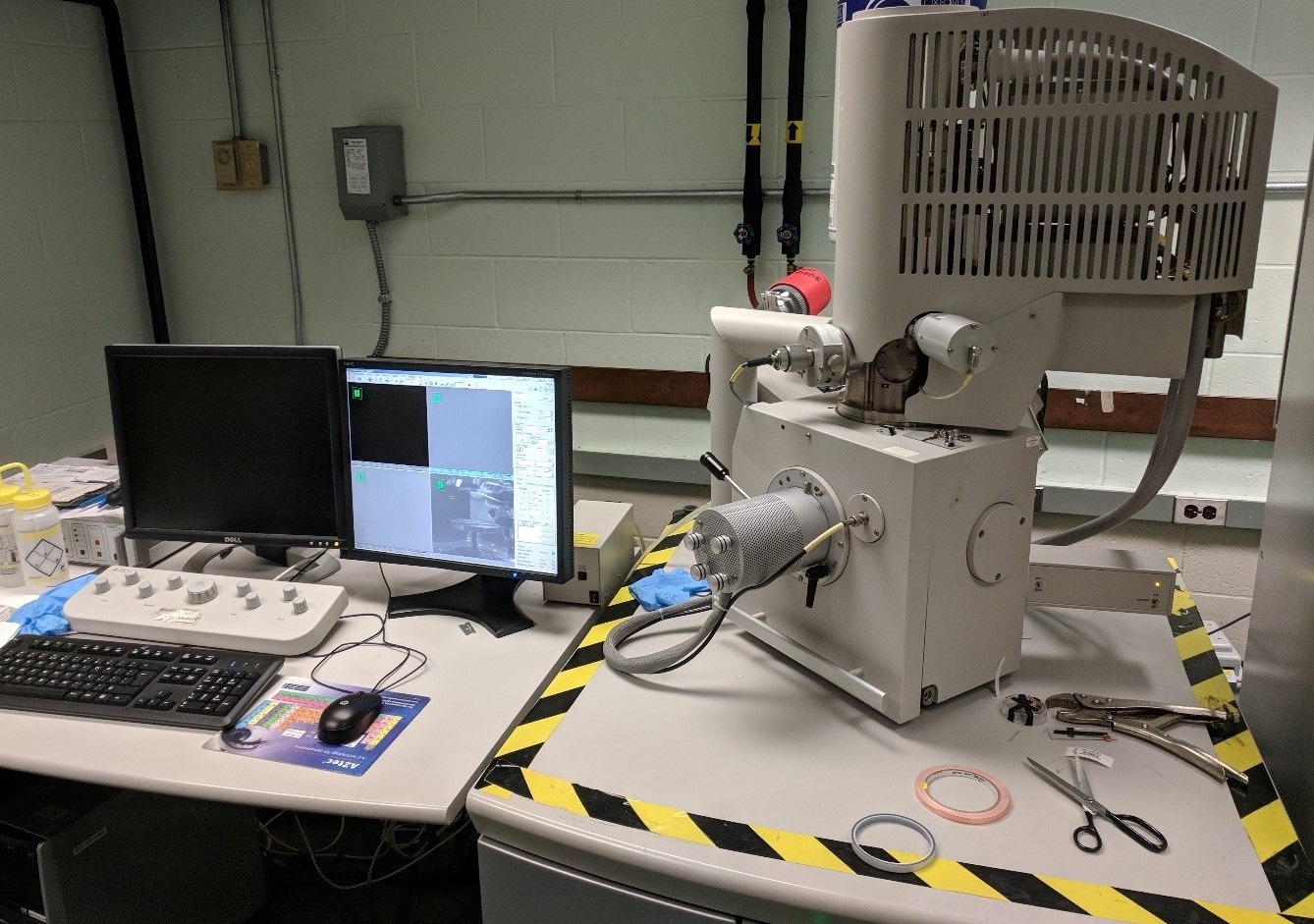
OKOS NDT CF-300 Scanning Acoustic Microscope
The OKOS NDT CF-300 Scanning Acoustic Microscope is used to image a specimen’s internal features. Scanning Acoustic Microscopy (SAM) is highly sensitive to the presence of delaminations, and can detect delaminations of sub-micron thickness, which are difficult to detect using X-ray radiography. SAM is an important tool for detecting popcorn cracking/delamination, die attach voiding, evaluating flip chip underfill integrity, and lid seal integrity in hermetically sealed packages.
The Scanning Acoustic Microscope can operate at frequency ranges between 2.25 to 230 MHz.
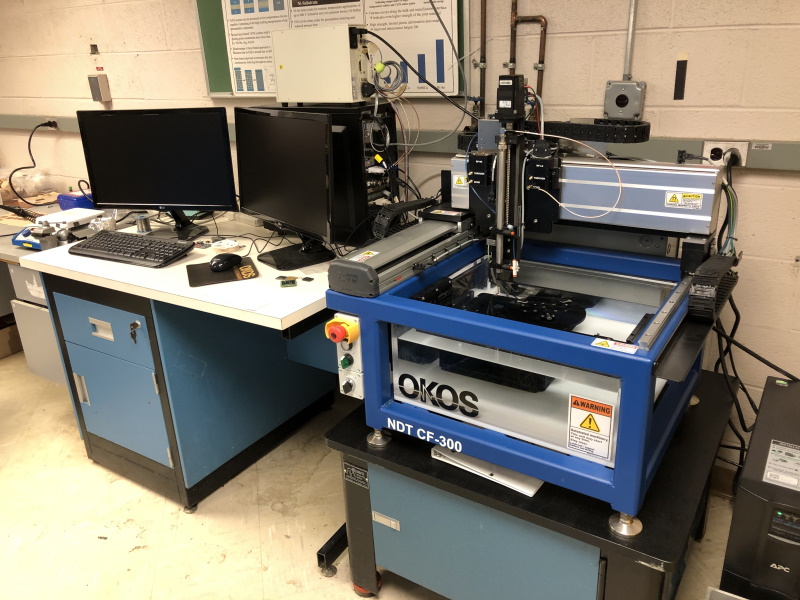
Lansmont Drop Tower
Used to induce shock loads to PCBs. The Lansmont Drop Tower can achieve ~10,000g, and wih the addition of a dual mass shock amplifier (DMSA) can achieve ~35,000g. Pulse profile (quick high amplitude impulse vs. longer shorter amplitude impulse) can be controlled by changing the medium of contact in the drop tower.
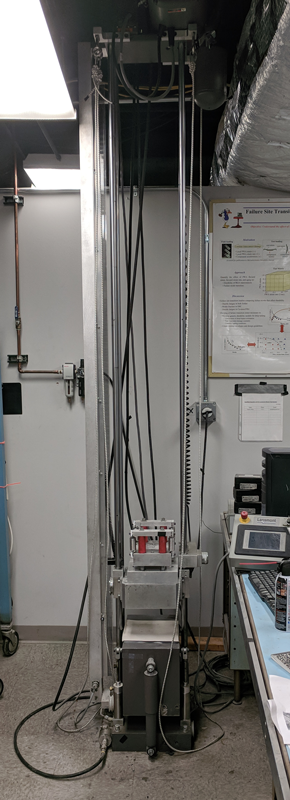
TA Instruments - Thermal Analysis – DSC 250 Differential Scanning Calorimeter
The DSC is used for investigation, selection, comparison, and end-use performance evaluation of materials in research, quality control and production applications. DSC can be applied to techniques such as glass transitions, “cold” crystallization, phase changes, melting, crystallization, product stability, cure / cure kinetics, and oxidative stability. DSC performs calorimetric measurements as a function of temperature.
The TA Instruments DSC 250 is equipped with a cooling system providing operation from -90℃ (183 °K). The instrument is typically operated to 400℃. Sample capsules include hermetically-sealed and non-sealed pans. Typical sample sizes are less than 25 mg.
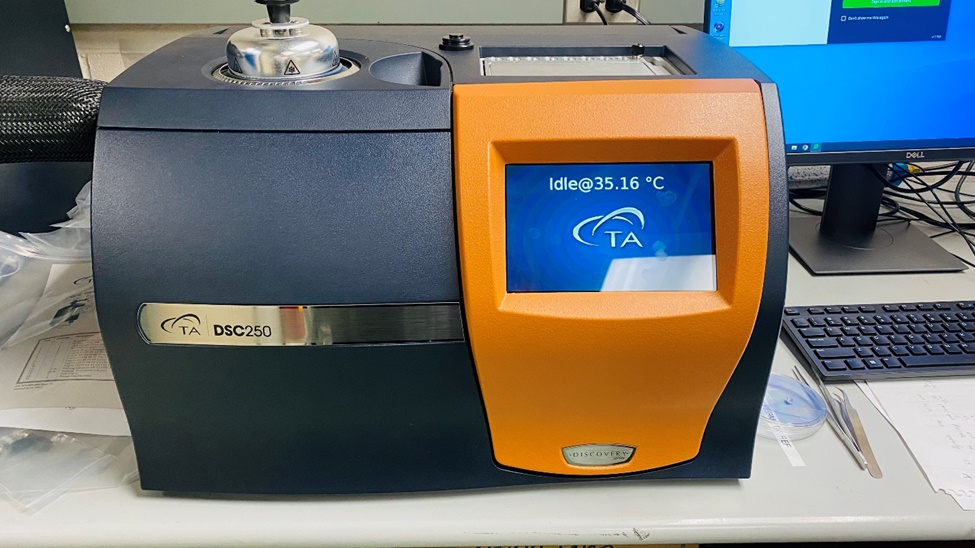
TA Instruments Dynamic Mechanical Analyzer 850
The DMA850 measures mechanical/rheological properties of a material as a function of time, frequency, temperature, stress, and strain. Such rheologic properties includes modulus, viscosity, creep, stress relaxation, and stress/strain behavior, over a range of temperatures.
The DMA 850 is capable of force measurement to 18 N. It has a furnace capability of operating up to 600℃. The linear optical encoder allows deformation amplitudes from 0.005 to 10000 μm with 0.1 nm resolution. Our current specimen grips are for tension, compression, and 3-point bend testing.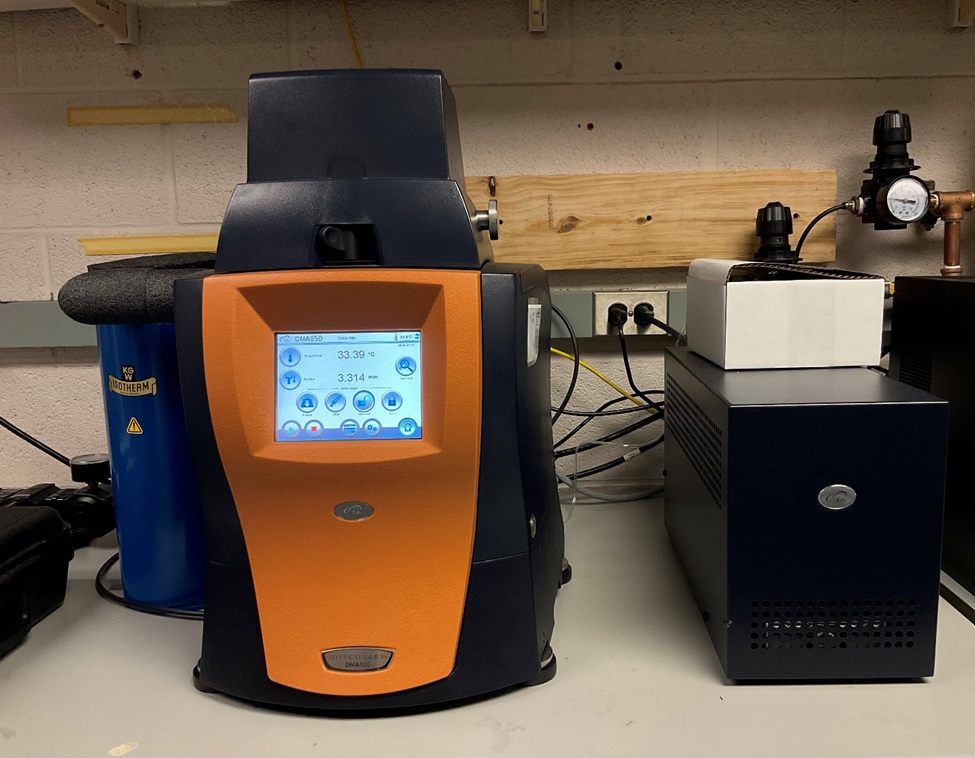
TA Instruments Thermomechanical Analyzer (TMA) Q400
The TMA Q400 permits the measurement of dimensional and viscoelastic changes as a function of temperature or time. Typical applications include coefficient of expansion, softening point, glass transition determinations, and modulus measurements.
The temperature range of the TMA Q400 is -150°C to 1000°C.
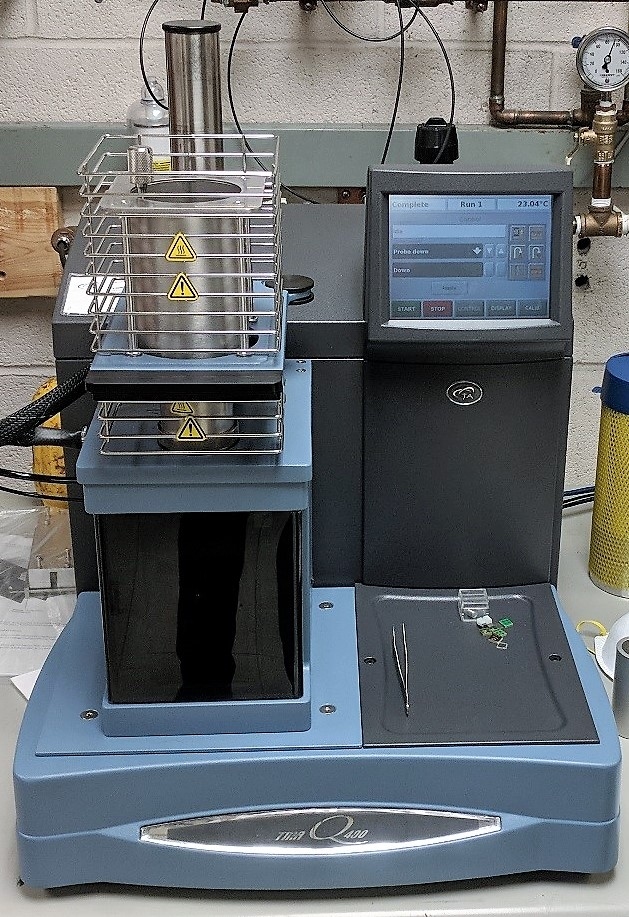
Top